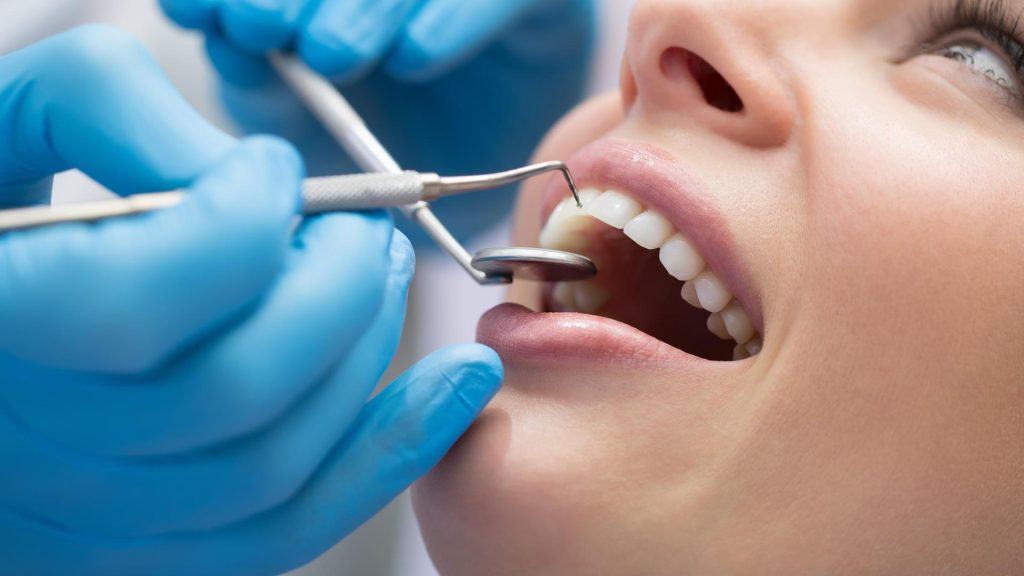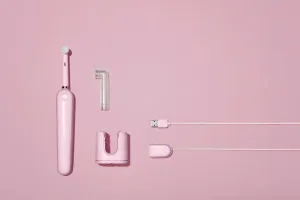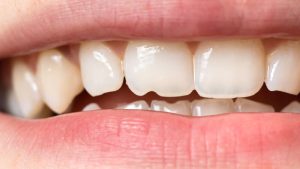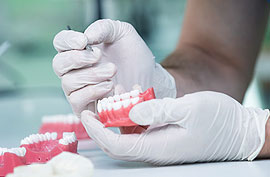The quest for a straighter smile has evolved dramatically. Gone are the days when traditional metal braces were the only path. Today, clear aligners stand out as a revolutionary force in orthodontics, offering a nearly invisible, convenient, and comfortable alternative. These custom-molded plastic trays gently guide teeth into their desired positions, appealing particularly to adults and teens seeking discretion during treatment. But like any transformative technology, clear aligners come with their own set of advantages and potential drawbacks. Making an informed decision requires a balanced look at both sides of the coin.
Whether you’re self-conscious about crooked teeth, dealing with spacing issues, or simply exploring ways to enhance your smile’s alignment, understanding how clear aligners work, who they’re best suited for, and what the experience truly entails is crucial. This comprehensive guide delves into the pros and cons, helping you determine if this popular teeth-straightening method aligns with your lifestyle, budget, and orthodontic needs. Let’s explore the clear path to a straighter smile, weighing convenience against commitment.
Demystifying the Process: How Do Clear Aligners Actually Work?
The magic behind clear aligners lies in advanced digital technology and the precise application of controlled force. While specific brand names exist (like Invisalign), the core process is generally similar:
- Initial Consultation & Assessment: Your journey begins with a thorough examination by an orthodontist or a dentist experienced in clear aligner therapy. They’ll assess your bite, the degree of misalignment, your overall oral health, and discuss your smile goals. This step determines if you are a suitable candidate. Not all orthodontic issues can be effectively treated with aligners alone.
- Digital Mapping Your Smile: Instead of messy traditional impressions, a highly accurate 3D digital scan of your teeth is typically taken using an intraoral scanner. This creates a precise digital model of your current bite. In some cases, traditional impressions might still be used.
- Virtual Treatment Planning: Using specialized software, the dentist plans your entire tooth movement sequence from start to finish. They map out the precise movements needed for each tooth, stage by stage. Crucially, this software allows you to see a virtual simulation of how your teeth will move and what your final smile is projected to look like – a powerful motivator!
- Custom Aligner Fabrication: Based on the digital plan, a series of custom-made aligners is fabricated using clear, medical-grade thermoplastic material. Each aligner in the series is subtly different from the last, designed to exert gentle, consistent pressure on specific teeth to move them incrementally – typically about 0.25mm per aligner set.
- Wearing Your Aligners: You’ll receive several sets of aligners at a time. You’ll wear each set for a prescribed period, usually 1-2 weeks, for at least 20-22 hours per day. You only remove them for eating, drinking anything other than plain water, brushing, and flossing. Consistent wear is paramount for success.
- Regular Progress Checks: You’ll have periodic check-ups with your dentist (often every 6-10 weeks) to monitor progress, ensure teeth are moving as planned, and receive your next batches of aligners. These appointments are generally quicker than traditional braces adjustments.
- Retention Phase: Once your teeth reach their final desired positions, the active treatment phase is complete. However, teeth have a natural tendency to shift back. You’ll need to wear retainers (often clear, similar to aligners, or sometimes fixed behind the teeth) according to your dentist’s instructions – usually full-time initially, then tapering to nighttime wear indefinitely – to maintain your beautiful new alignment.

The Upside: Shining a Light on the Pros of Clear Aligners
The popularity of clear aligners isn’t accidental. They offer compelling advantages over traditional methods:
1. Unmatched Aesthetics: The ‘Invisible’ Factor
This is often the primary draw. Made from transparent plastic, aligners blend seamlessly with your teeth, making them virtually unnoticeable in casual social interactions or photos. This discretion is highly valued by adults, professionals, and teens who might feel self-conscious about wearing traditional metal braces.
2. Freedom of Removability
Being able to take your aligners out offers significant lifestyle benefits:
- No Food Restrictions: Craving popcorn, corn on the cob, or sticky candy? No problem. Simply remove your aligners before eating and enjoy your favorite foods without worrying about damaging brackets or wires.
- Easier Oral Hygiene: Brushing and flossing are considerably simpler. Remove the aligners, clean your teeth thoroughly as usual, clean the aligners, and pop them back in. This greatly reduces the risk of plaque buildup, cavities, and gum disease often associated with navigating around fixed braces.
- Special Occasions: While consistent wear is key, the ability to briefly remove them for a very important event or photo (though generally discouraged) offers flexibility.
3. Enhanced Comfort
Compared to metal braces, clear aligners generally offer a more comfortable experience:
- Smooth Material: Made from smooth plastic, they lack the sharp edges of metal brackets and wires that can irritate cheeks, lips, and tongue, causing sores or cuts.
- Gentle Pressure: While some pressure is necessary for tooth movement (especially when switching to a new set), it’s typically perceived as less intense than the tightening adjustments of traditional braces.
4. Predictable Results & Visualization
The advanced 3D planning software allows for highly precise treatment planning. You and your dentist can visualize the step-by-step movement and see the projected final outcome before you even start. This predictability provides confidence and clear expectations.
5. Potentially Fewer, Shorter Dental Visits
While regular check-ups are essential, they are often less frequent and shorter than the adjustment appointments required for traditional braces. Much of the “work” happens by switching aligner sets at home according to schedule.
The Flip Side: Considering the Cons and Commitments
Despite their appeal, clear aligners aren’t without potential downsides and necessary commitments:
1. The Discipline Requirement: Compliance is Key
This is arguably the biggest hurdle. For aligners to work effectively, they *must* be worn for the prescribed 20-22 hours per day. Taking them out too often or for too long will significantly delay progress and compromise the final result. This requires considerable self-discipline and responsibility, especially for younger patients. Forgetting to put them back in after meals or losing track of wear time can derail treatment.
2. Limited Scope for Complex Cases
While technology is constantly improving, clear aligners are generally most effective for mild to moderate crowding, spacing, and bite issues. Complex orthodontic problems – such as severe bite discrepancies (overbites, underbites, crossbites), significant rotations, teeth that need to be moved vertically (extrusion/intrusion), or cases requiring jaw surgery – often still necessitate the greater control and force application offered by traditional braces or other specialized orthodontic treatment modalities.
3. Potential for Initial Discomfort and Speech Adjustments
Switching to a new aligner set often brings a feeling of pressure or tightness for the first day or two – this is normal and indicates the teeth are moving. Some people also experience a slight lisp or change in speech initially as their tongue adapts to the aligners. This usually resolves within a few days but can be a temporary inconvenience.
4. Risk of Loss or Damage
Being removable means aligners can be lost (e.g., accidentally thrown away wrapped in a napkin) or damaged (e.g., chewed by a pet, warped by hot water). Replacing lost or damaged aligners incurs extra cost and can delay treatment progress while waiting for replacements.
5. Diligent Cleaning Required (Aligners & Teeth)
Aligners need to be cleaned every time you brush your teeth to prevent bacteria buildup, staining, and odors. Simply rinsing isn’t enough. You also need to brush your teeth after every meal or snack before reinserting the aligners to avoid trapping food particles and sugars against your teeth, which increases the risk of cavities.
6. Potential Cost Factor
In many cases, the cost of clear aligner treatment can be higher than traditional metal braces, though this varies depending on the complexity of the case, duration of treatment, and geographic location. It’s essential to discuss costs and payment options and check insurance coverage.
7. Attachments and Elastics May Still Be Needed
For certain tooth movements, small, tooth-colored bumps called “attachments” may be bonded to specific teeth to help the aligners grip better and apply force more effectively. These make the aligners slightly more noticeable. Sometimes, small rubber bands (elastics) might also be needed, similar to traditional braces, to help correct bite issues.
Are Clear Aligners the Right Choice for You? Assessing Candidacy
Clear aligners are an excellent option, but suitability depends on several factors:
- Type of Malocclusion: Best suited for mild to moderate crowding, spacing, slightly crooked teeth, and minor bite adjustments.
- Patient Compliance: Requires high motivation and commitment to wear aligners consistently for 20-22 hours daily.
- Age: While popular with adults, responsible teens can also be good candidates. Younger children are typically not suitable.
- Oral Health: Existing cavities or gum disease must be treated before starting aligner therapy. Good baseline oral hygiene is essential.
- Lifestyle: Consider if your daily routine allows for consistent wear and the necessary hygiene steps after eating.
A consultation with an experienced provider is the only definitive way to know if clear aligners can effectively achieve your desired results.

Beyond Aligners: A Glimpse at Orthodontic Alternatives
If clear aligners aren’t the ideal fit, remember that modern orthodontics offers various effective solutions:
- Traditional Metal Braces: The time-tested standard, highly effective for virtually all types of cases, often more budget-friendly.
- Ceramic Braces: Function like metal braces but use tooth-colored or clear brackets for improved aesthetics. Can be more prone to staining or breakage than metal.
- Lingual Braces: Customized brackets attached to the *back* (lingual side) of teeth, making them completely invisible from the front. Can be more challenging for speech and cleaning initially and are often more expensive.
- Self-Ligating Braces: Use special brackets with clips or doors to hold the wire, potentially reducing friction and sometimes treatment time or appointment frequency compared to traditional braces. Available in metal and ceramic.
Discussing all viable options within the field of orthodontics with your provider will help you choose the treatment that best suits your clinical needs, lifestyle, and budget.
Living with Aligners: Tips for Success
Adjusting to life with clear aligners involves creating new habits:
- Carry a Kit: Keep a small pouch with your aligner case, a travel toothbrush, toothpaste, and floss for easy cleaning on the go after meals.
- Set Reminders: Use phone alarms or apps to remind you to put aligners back in after eating and to switch to your new set on the correct day.
- Clean Aligners Properly: Brush gently with a soft toothbrush and clear, unscented soap or a specialized aligner cleaner. Avoid toothpaste (can be abrasive) and hot water (can warp plastic).
- Use Chewies (If Recommended): Small rubbery devices called “chewies” can help seat the aligners properly over the teeth, ensuring optimal fit and effectiveness.
- Protect Your Investment: Always store aligners in their protective case when not in your mouth to prevent loss or damage.
Conclusion: Making the Clear Choice for Your Smile
Clear aligners offer a compelling blend of discretion, convenience, and comfort for teeth straightening. Their near-invisibility and removability provide significant lifestyle advantages over traditional braces, making them an attractive option for many. However, success hinges critically on patient compliance – the commitment to wearing them diligently for 20-22 hours daily is non-negotiable. They may also not be suitable for very complex orthodontic cases, and the cost can be a factor.
Ultimately, weighing the pros (aesthetics, comfort, hygiene, convenience) against the cons (discipline required, treatment limitations, potential cost) in the context of your specific orthodontic needs and lifestyle is key. A thorough consultation with a qualified dental professional is the essential first step to determine if clear aligners are the right path to achieving the straighter, healthier smile you desire.
Explore Your Straight Smile Options at Genç Dental
Considering clear aligners or other ways to straighten your teeth? Making the right choice starts with expert guidance. At Genç Dental, our experienced orthodontic team provides personalized consultations to assess your unique smile, discuss your goals, and determine the most effective treatment path for you. We offer state-of-the-art clear aligner therapy alongside other advanced orthodontic solutions.
We are committed to helping you achieve a beautifully aligned smile and optimal oral health using treatments tailored to your needs and lifestyle. Let us guide you through the pros and cons and help you make an informed decision. Contact Genç Dental today to schedule your orthodontic consultation and take the first step towards the confident smile you’ve always wanted.










